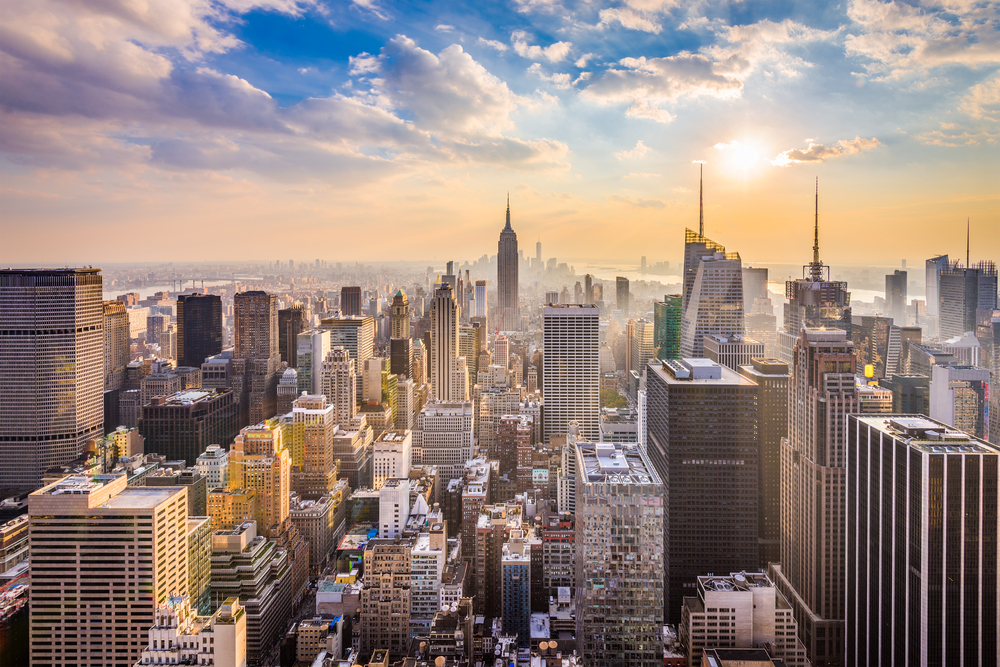Report from NYC Comptroller Calls for Strengthening Proposed DOB Rules for the Implementation of NYC’s Landmark Green Buildings Law

Comptroller recommends limiting the ability of owners to purchase off-site “renewable energy credits” in order to promote on-site emissions reduction
New York, NY — In a new report, Cap the Credits, New York City Comptroller Brad Lander lays out steps to strengthen implementation of Local Law 97, the Climate Mobilization Act, designed to dramatically curb building emissions. For the report, the Comptroller’s office conducted an analysis of over 23,000 buildings covered by the law, in order to develop recommendations as the NYC Department of Buildings (DOB) holds a hearing on proposed rules for implementation of the law, set to take effect in 2024.
The report calls for limiting the use of Renewable Energy Credits (RECs) to 30% of a building’s emissions overages, warning that unlimited use of pay-to-pollute loopholes in the draft rules would prevent onsite emissions reduction. The report also urges new financing mechanisms to assist affordable housing owners with compliance.
“New York City’s Local Law 97 is the most ambitious building retrofit law in the country, but it will only work as intended if DOB amends its proposed rules to limit the pay-to-pollute ‘Renewable Energy Credit’ loophole and requires buildings owners to reduce emissions onsite,” said Comptroller Brad Lander.
Over 70 percent of New York City’s greenhouse gas emissions (GHG) come from buildings. The City Council passed Local Law 97 (LL97), the most ambitious building energy law in the country, in 2019, with the goal of dramatically reducing emissions. The goal is to reach a 40% reduction in GHG from the 2005 baseline by 2030, and 80% reduction by 2050. Mandatory emissions reductions will fundamentally transform the City’s building stock, requiring property owners to invest in work such as replacing windows, upgrading insulation, and improving the efficiency of lighting, water heating, heating, ventilation and air conditioning (HVAC).
In October, DOB published draft rules for the implementation of LL97, which is set to go into effect in 2024. DOB is holding a hearing on the draft this week.
Analysis of Covered Buildings
To inform its recommendations, the Office of the New York City Comptroller undertook a review of over 23,000 privately-owned buildings covered by the law, comparing buildings’ current GHG emissions to the limits imposed by the law, and analyzing buildings’ current source of emissions. The Comptroller’s analysis found:
- Only 30% of buildings currently have emissions above the standards allowed for the initial 2024-2029 compliance period, but that will increase to over 70% in 2030, as standards rise at the start of the law’s second compliance period.
- Residential buildings are disproportionately reliant on the onsite combustion of fossil fuel for heating, cooling, and cooking. Extensive retrofits of residential buildings will be capitally intensive and require significant financial and technical support.
- A large portion of buildings will need to complete large-scale retrofits to comply with the law by 2030. Initially presented with upfront costs for retrofits, building owners will see significant savings over time and yield the maximum benefits for New Yorkers. The rules must ensure that retrofits to improve efficiency or electrify buildings are incentivized and encouraged.
- Large commercial buildings are responsible for the largest share of emissions. Because these buildings are mostly located in Manhattan, these large commercial buildings’ owners will benefit most from statewide grid decarbonization without undertaking any action to retrofit buildings as envisioned in LL97. If the grid continued to derive an overwhelming majority of its power from fossil fuels, the commercial building sector would emit 2.5 million tons of CO2 (equal to over 255 million gallons of gas) each year unabated and not subject to penalties.
Unlimited Use of Renewable Energy Credits Would Reduce Law’s Effectiveness
The draft rules proposed by DOB would permit property owners to purchase Renewable Energy Credits (RECs), without limits, to offset their electricity emissions overage. RECs fund renewable energy projects either located in the city region or from projects that deliver power to the city’s electrical grid. The Comptroller’s report found:
- An unanticipated supply of Renewable Energy Credits (RECs), as a result of renewable energy projects prompted by the NYS Climate Leadership and Community Protection Act (CLCPA), passed after LL97 was adopted, threatens to weaken the impact of the law.
- Under the proposed DOB rules, two-thirds of total emissions would be eligible for credits in lieu of emission reductions, significantly reducing the impact of the law.
- The Comptroller’s office analysis found that without limiting RECs, buildings would only reduce 31% of emissions during the 2030-2034 compliance period. Capping the use of RECs to 30% of a building’s emissions above the limit would drop emissions by 79%, achieving LL97’s goal to both significantly reduce emissions and catalyze a green economy.
Recommendations
The Comptroller’s office therefore recommends three steps towards effective implementation of LL97:
- Limit the use of RECs to no more than 30% of a building’s electricity emissions above its limit.
- Encourage building retrofits and energy efficiency by aligning incentives, costs, and penalties.
- Establish a Green Affordable Housing Fund by establishing a payment in lieu of fees for excess emissions to finance retrofit and energy efficiency costs in rent-stabilized and City-subsidized affordable housing.
Lander continued, “We have a historic chance to promote a just transition away from fossil fuels and to create thousands of good jobs in the process. Rather than letting our largest emitters buy their way out of retrofits, Local Law 97 implementation must structure incentives and financing options to achieve the emissions reductions needed for a greener, healthier New York City
###